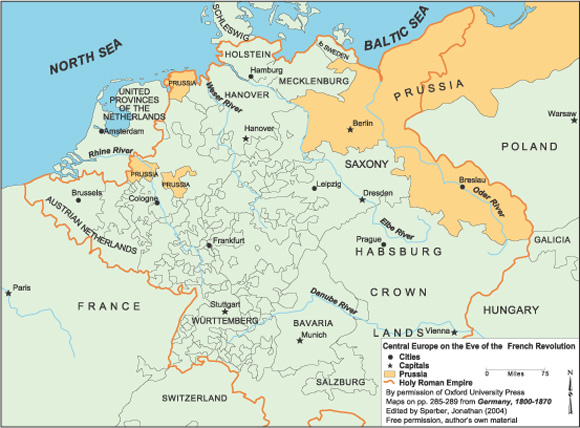













INTRODUCTION | DOCUMENTS | IMAGES | MAPS | EDITOR
|
A series of wars resulting from various succession disputes (the War of the Spanish Succession, 1701-1714; the War of the Polish Succession, 1733-1735; the War of the Austrian Succession, 1740-1748), as well as inheritances and other acquisitions, led to further territorial shifts in eighteenth-century Central Europe. As of 1713, Austria was in possession of the former Spanish Netherlands and France held Lorraine. Of pivotal importance, however, was the rise and territorial expansion of Prussia. Since the early seventeenth century, Prussia had owned a number of smaller territories in the western empire (Cleves-Mark-Jülich); in 1720 it took over parts of West Pomerania from Sweden, and in 1744 it gained East Friesland. In the two Silesian Wars (1740/42, 1744/45), Prussia managed to wrest the valuable province of Silesia away from Austria. The Seven Years’ War (1756-1763), which engaged all the major European powers – and also extended to the North American colonies – pushed Prussia to the brink of collapse. But after the new Russian Czarina Catherine II withdrew from the alliance between France, Austria, and Russia against Friedrich II, the Peace of Hubertusburg (1763) was concluded. It called for compensation without territorial changes: Silesia thus remained Prussian. In 1772 Prussia gained West Prussia in the course of the first Polish division. Thus, Prussia established itself as a major European power alongside Great Britain, France, Austria, and Russia, and successfully prevented Austria from gaining further power in the 1770s and 1780s. Please click on print version (below) for a larger version with enhanced resolution.
By permission of Oxford University Press, www.oup.com. |
 print version
print version return to map list
return to map list
